Twist
A warp dried in in a prideful twist like a fist clenched in the face to resist another. The long plane rides the swell and clips off stroke-on-stroke all opposition and takes down the proud to a low point.
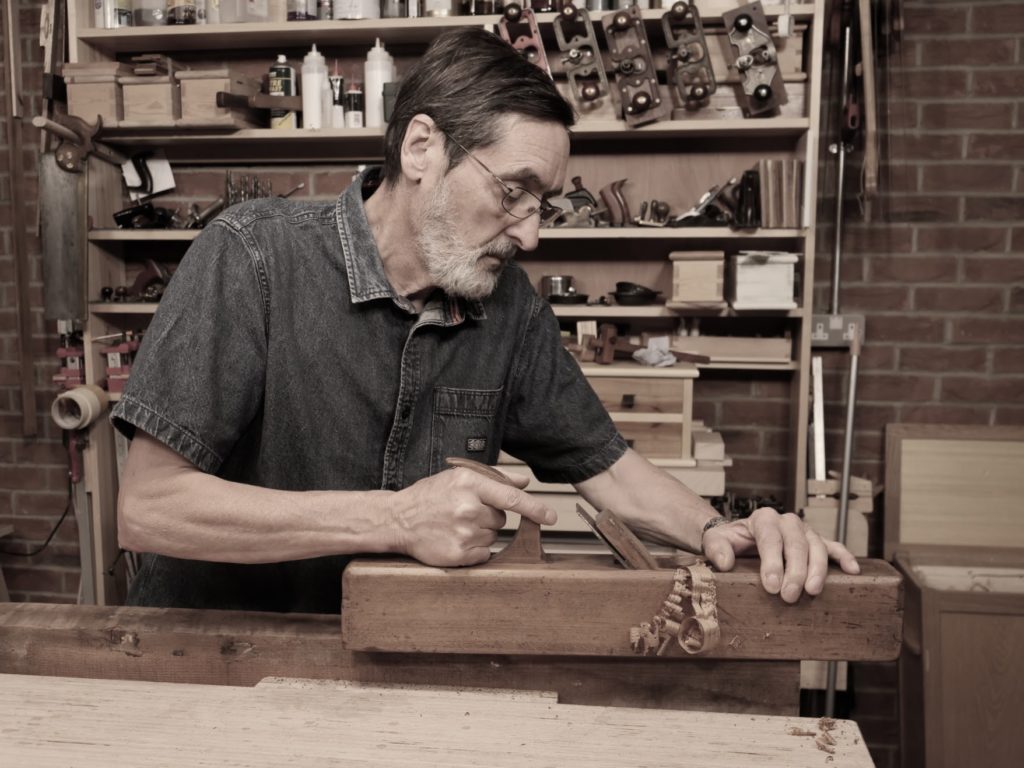
Then comes the haltering of the clip, clip and the faltering stroke that jars the man’s arm, his wrist, his hand, his grip, and a final ‘swoosh‘ sounds the victory to bring the matter to rest beneath the plane’s truing sole.
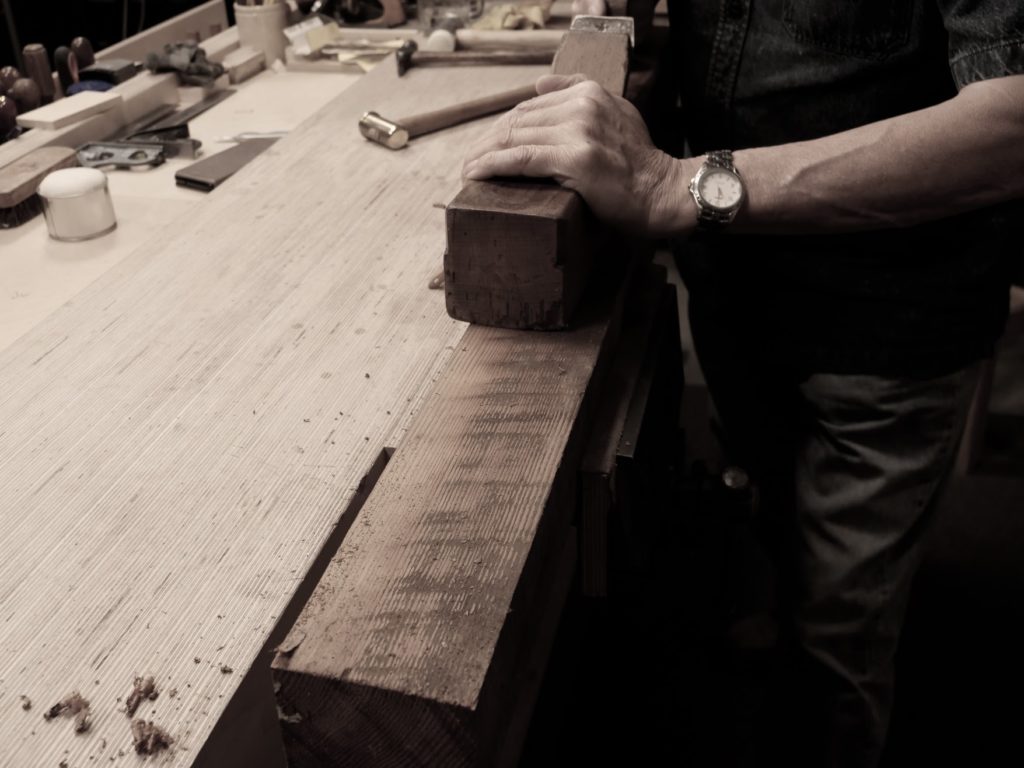
Subdued now, the wood lays flat to the workbench top, smooth like glass beneath tracing fingers and the worn off tips of the man’s hands.
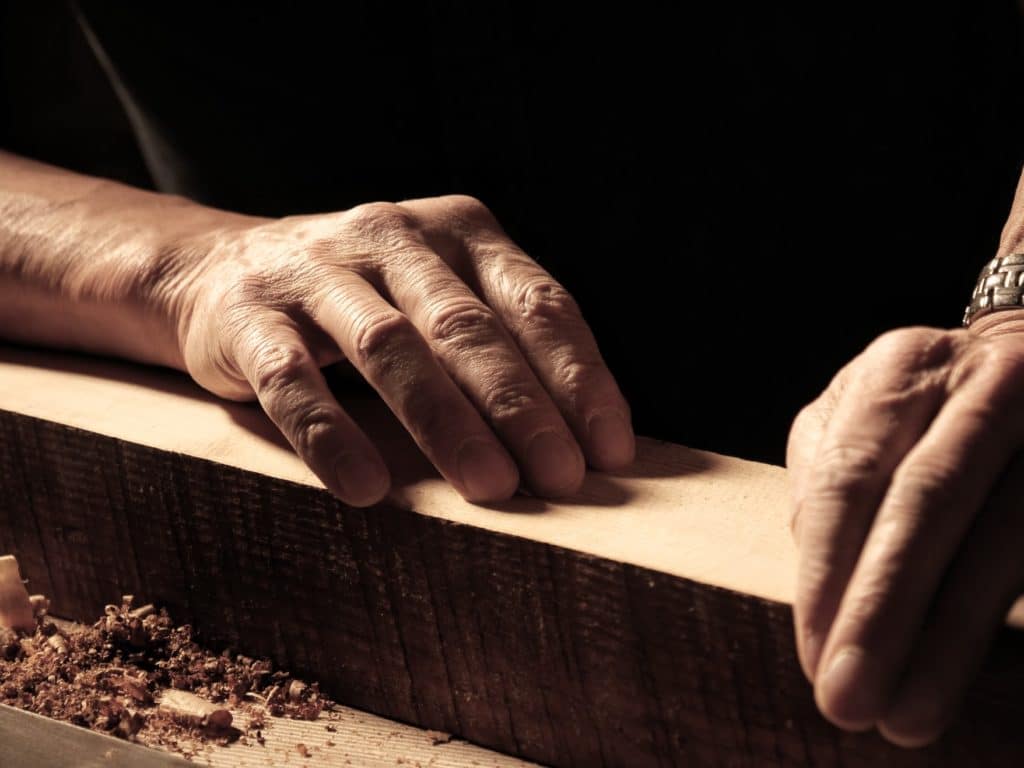
The palm rests face down and waits, searches for a pulse and then lifts the board to the squinting eye, head cocked to sight along its length for straightness and meets the gentle sigh, the slow breath of contentment.
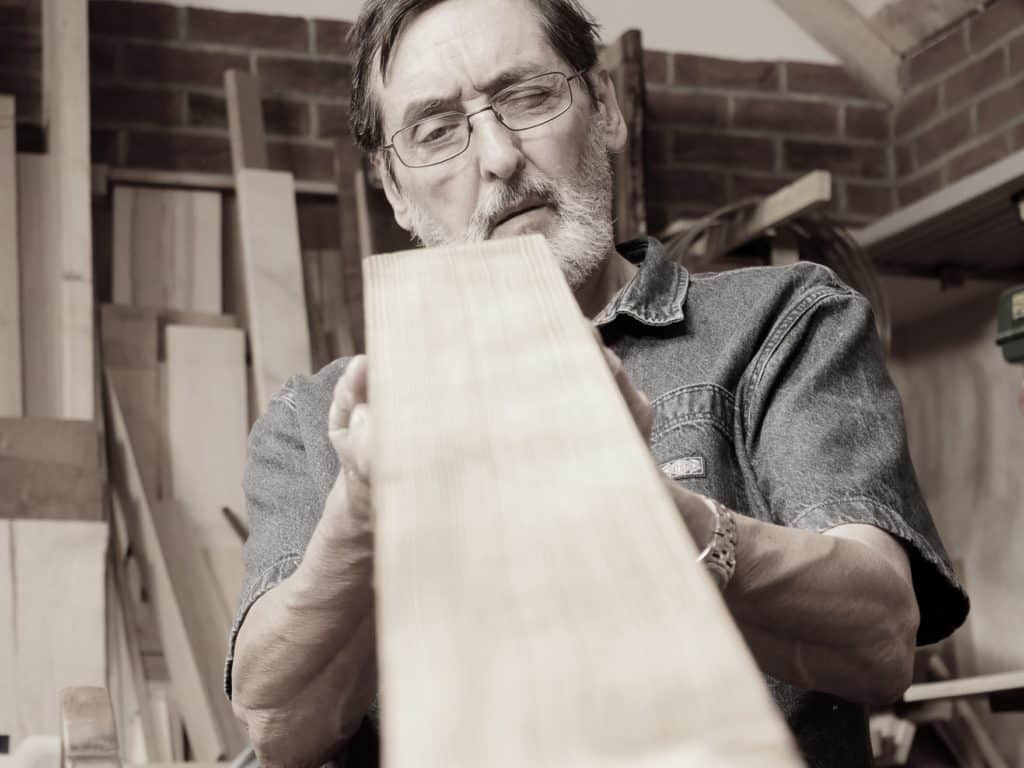
The man flips the board, measure its length in a short gaze and takes the crayon to mark its proven face. The vise grips, an iron jaw takes hold and the man raises his plane to determine its course on the wood once more.
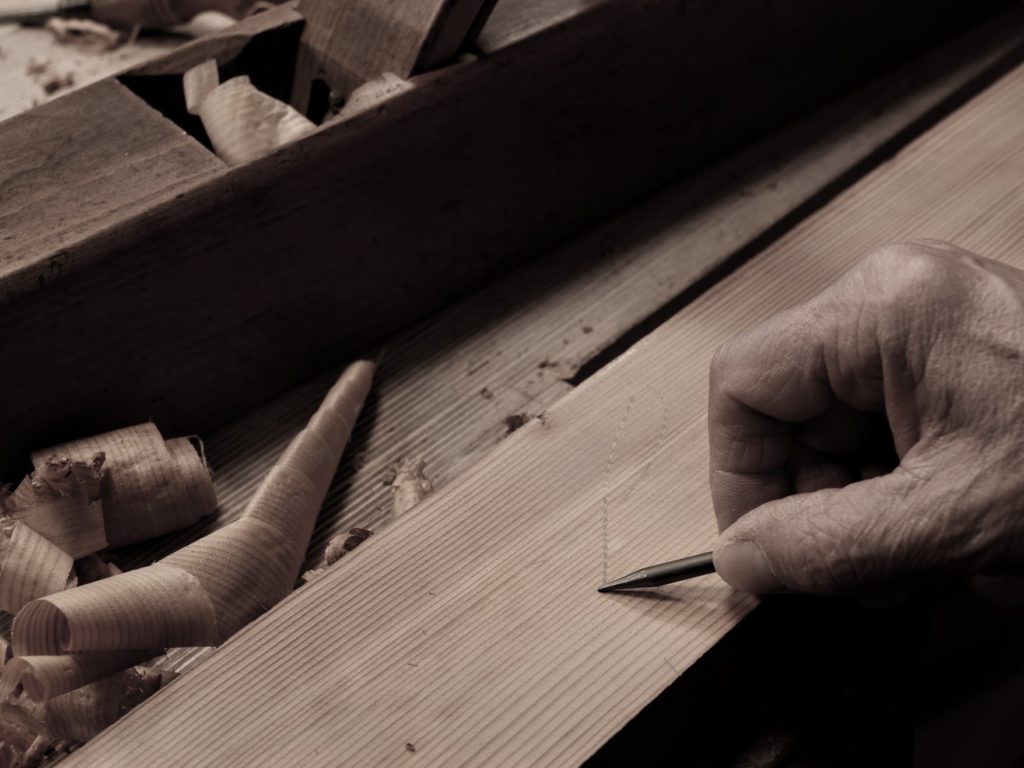
The light glints in flashes between the saw marks as ridged ribs in valleys lie passively to either side and roughness becomes subdued like the flickering of an old film reel snapped on a big screen.
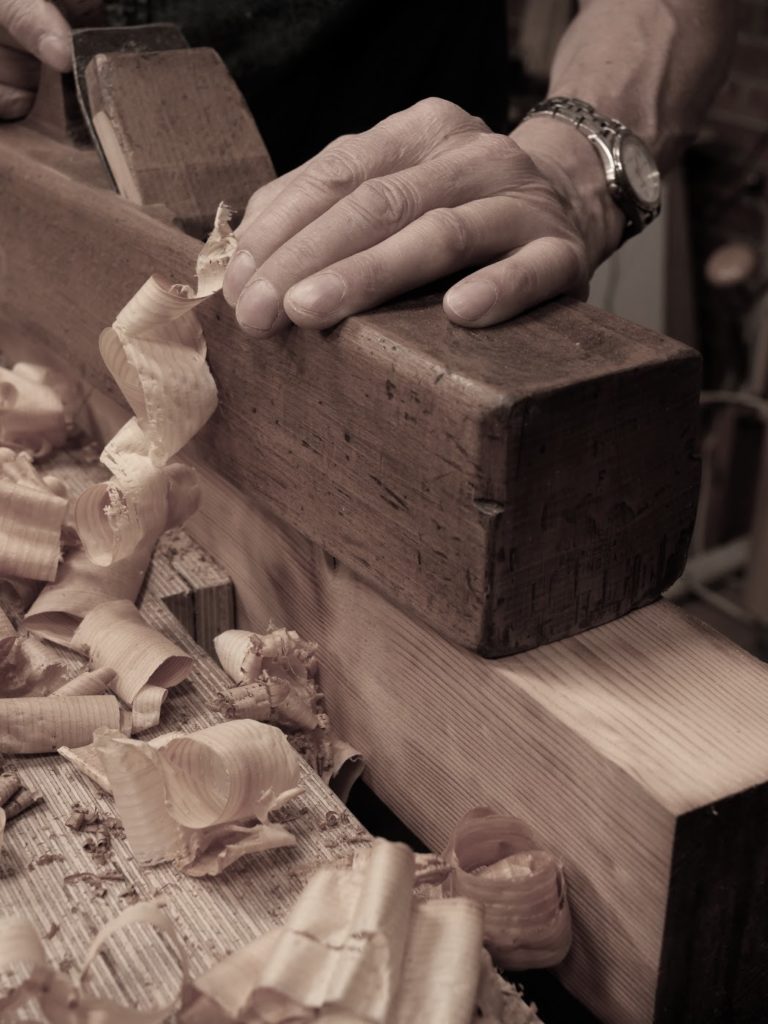
Each push stroke lengthens the narrow band as the peaks lower and then there it is, that sudden stroke, the lost thing found, that tells the man of the wood’s yielding. The light rests full length as a swollen river its determined course for lower reaches.
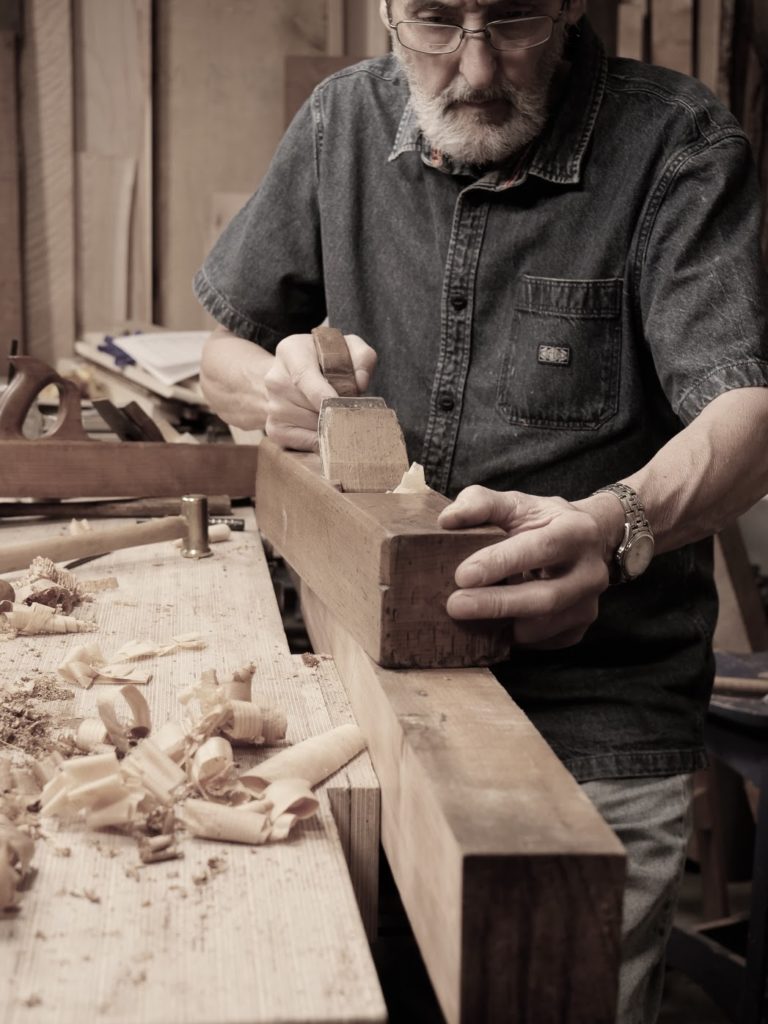
The plane now rests hanging from a limp arm and then the hands wait for a caught breath in the lungs to quieten the pulse and stay the beating heart’s pump, pumping back to the steadiness of a life-long rhythmic beat.
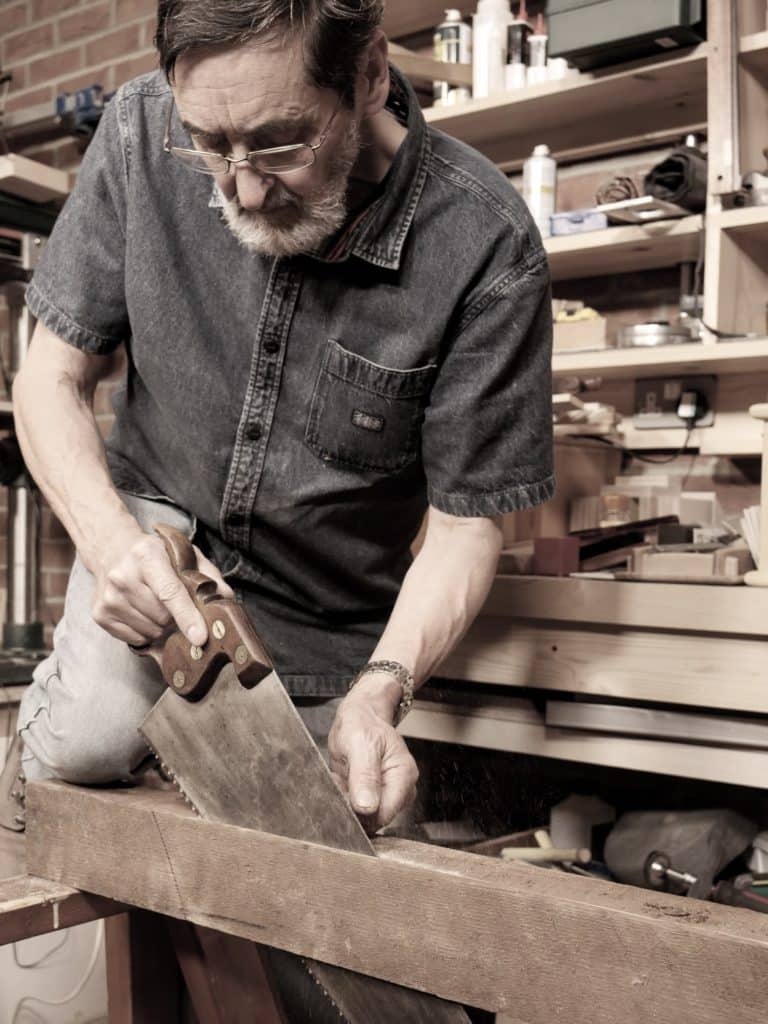
Once more the man lifts the wood to a half-cocked head and casts his squinting eye along its length and the eye agrees the settled matter of trueness and there he makes once more the mark that proves his effort.
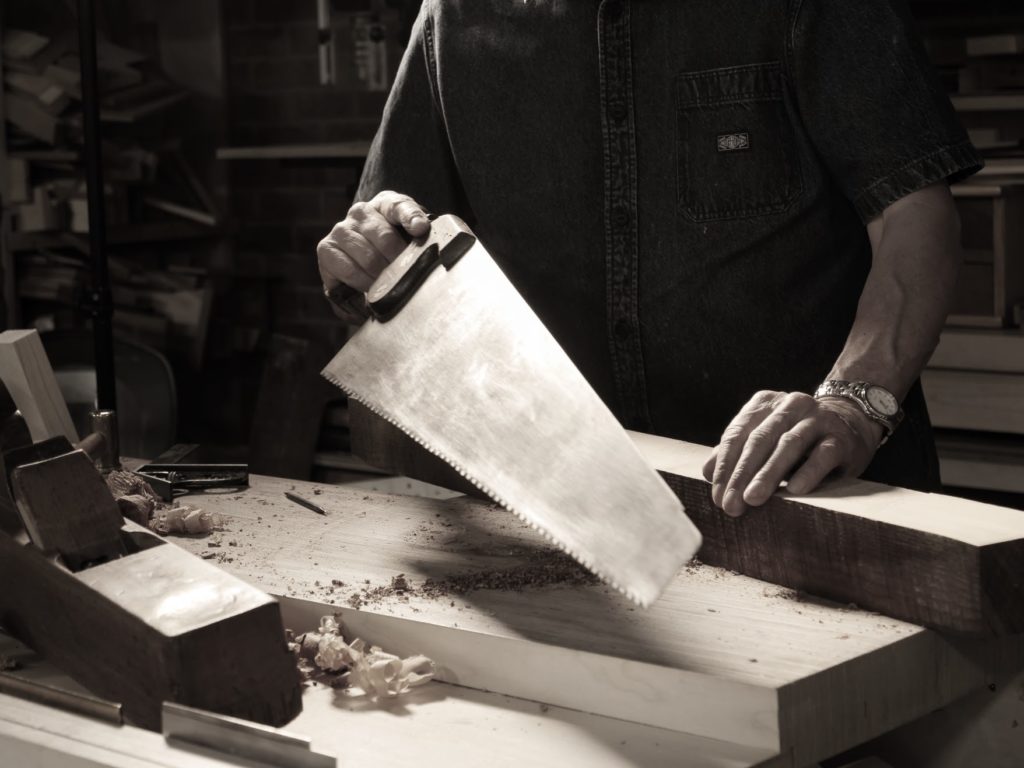
Success seems close to the man holding now the saw and switched from the plane and he rips the wood to new widths with the long and measured strokes of a master. The even kerf defies wandering to keep its steady path along the line in passaging through the wood’s strong grain and parts off the waste no longer wanted.
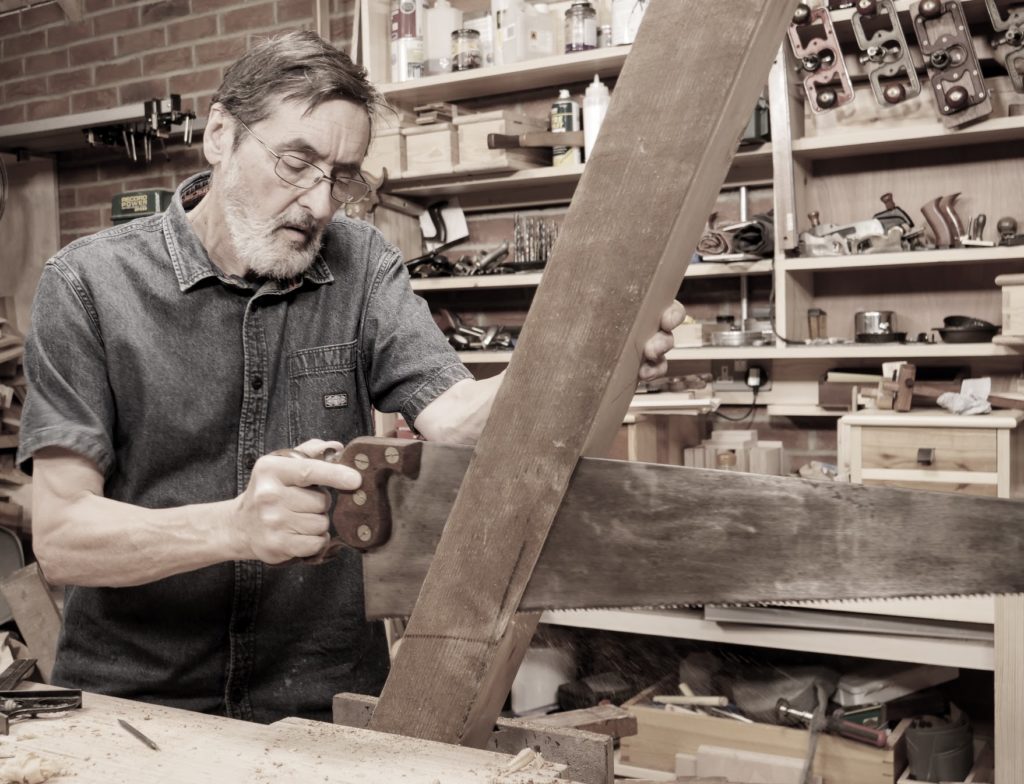
The foot returns to the workshop boards beneath his feet, the knees straighten, the knotted shoulders slump to hang once more in new release from the heavy and steady working. The saw returns to hang from the wooden peg above his head and the fingers of the man search the saw strokes now recorded in the rough-cut wood.

The wait continues for moments, and once again the gathering of the breath, the steadying of the firm, strong pulse beat restores a rhythmic peace. So it is for the man who works his wood by hand in a search for harmony through the cutting edges of his tools and the shaving off of all excess before the joints are made.
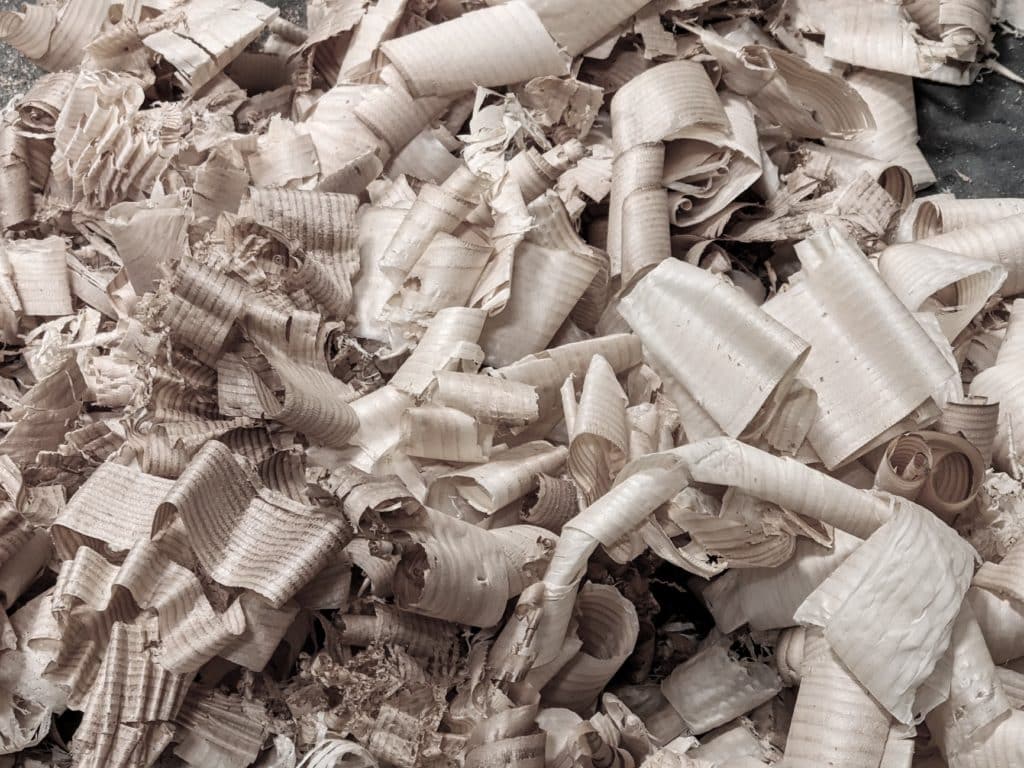


What a beautiful piece of writing. Full of care. Thanks for lightening my day with it.
The poetry of the writing is enhanced by the sepia like photographs. Lovely — I was just thinking about sharpening up the blades of a couple old wooden jointer planes. (I may also have to redo the mouths). This inspires me.
Sooooo well worth it. In all of our invented cast metal and steel soled planes, not one, not one does what wooden planes can do with a fraction of the effort. It took 50 years before crafting artisan woodworkers gradually made the shift to the new planes but it wasn’t they who changed but the emerging generations looking then for quick and cheap. I should also add here that though many say that the old craftsmen were just Luddites eschewing change, it was no such thing, and whoever says such a thing is just ignorant of reality.
Thank you for your comment, Paul. I sharpened it up and trued the bottom as you suggested. Started taking shavings, adjusting and fine tuning the blade with taps on the body. Worked on one test board, complete with knots — it sailed right through them (once the speed was up) as though they were nothing. Now I have to learn to control it. Well worth the effort.
Wonderful piece! I would also second what you said about the wooden bodied planes above. A joy to use! Tom had mentioned fixing the mouth. Don’t worry about it for your jack/scrub plane used for hogging off rough surfaces. But for your try plane and smoother it can make a difference. As Paul has described before the planes work great, and you can still see/feel the marks of the hands of a master who used the plane before, and if that was a grandfather or you know the heritage it means even more.
Hi Paul, I agree 100% there is nothing like the wood on wood planing as far as ease of motion with less friction provided of course a sharpened blade is used. Curious to know if your preference is to use wood smoothers compared with the comparable metal planes? I suspect your use of metal is primarily to accomodate your audience who has primary access to metal planes?
You have a new calling😄
Beautiful as always. Thank you
Steven Covey’s 7th habit comes into play between projects, or in times of lull, whether imposed or not: #7 Sharpen the saw. (and the plane blades, and the chisels, and the gouges, and the scrapers)
So that the next time we need them to sing like this soothing story, they’re ready.
You put the art in artisan!
Poetry, the voice of the soul. No one expressed their soul better.
I have one – an old Marples but it’s in good condition , my dad bought it in the 60’s but rarely used it. I found adjusting the blade difficult to start with but after several attempts I got it to work and used it as an experiment to help true the top of the workbench project. It does feel good although I don’t think I have the skill level to fully appreciate it.
WoW! Good to Great! Inspired!
I have some of my Grandfather`s tools. He was born about 1850, and was a pattern maker in England, in N.Hants. A few years ago, I was making a mantel piece from rough cedar, and I dug out his big wooden jointer. I sharpened the blade, got it adjusted, and it worked to perfection.
My son and grandson appreciate the age and family history of those tools, and I`m sure they will be appreciated long after I`m gone.
I have a wooden Mathieson plane that in my way i clonked too vigorously and the handle jarred off…i think i will superglue and bore for a dowel like a Spear and Jackson handle if i can arrange myself to drill straight.
It’s abit out of whack but is very pleasantly weighted.
I also learnt that leaving the metal parts outside drinks the saw allows the body to change shape and it’s an over tight fit now.
I have a vice now and have sharpened a 7pt rip cut panel saw and set with punch and then evened with two hammer method. Maybe not sharp enough yet but i did try and be attentive so as to develop..acuity. Goodnight
This poem doesn’t describe craftsmanship but rather embodies it, takes you inside. Thrilling. Thank you.
Very nice Paul.
Out of curiosity, any specific plans for that piece of wood you tamed?
Oh Paul you’re so right, those old planes are just so lovely to use. The wonderful cast steel blades take such an edge. The wooden body is usually easy to true, and wooden beech sole on wood subject = much less friction.
I’ve saved dozens of these planes and the little ‘coffin’ smothers. They cost so little, and every jack plane saved is one les for some soulless twit to turn into a vintage lamp.
Lovely piece of writing Paul. I have moved over to an 1860 jack from Ebor works in York, and a Matheson from goodness knows when. The very best smoother I have, apart from my 2 inheritance Stanley’s from the early fifties and sixties is a wooden plane believe it or not from “work zone” which I believe is an Aldi brand!! It is a European pattern, with the horn on the front, and for £2.20 + postage from a very well known online auction site is the absolute steal of the century 👍🤣🇬🇧🇬🇧
Paul, I do hope you are keeping well in these strange times. I noticed a slight hint of loneliness in your wonderful post.
When I’ve felt a little down I have gone out to my workshop, picked up my old rescued Record 5 1/2 plane and simply planed some timber for no particular project.
The weight of the tool, the swish of the plane and the glass-smooth feel of the planed surface transport me to a good place.
Keep up the great posts and may we all be together again soon.
Richard
No, I am not in any way lonely. As you rightly say, things are not at all normal nor should they be for anyone with such events as we see unprecedented around us. I am most fortunate of all in that I have lived for long periods isolated to my work and even with people around me tended to isolate myself to my work in my bid to leave a legacy of information from my working knowledge as a lifelong crafting artisan that will help the generations yet to come to bypass a mass-manufacturing life using methods and methodology to became the new masters when I am gone. With the demise of man-to-boy handing down and passing on that will indeed never return to our culture, the internet and videoing as become the new norm. This itself reflects both the good and negative side of modern culture in that we, as is happening within new parenting for many newborns and their parents, much less quality face to face bonding is taking place as parents wander with devices and games grabbing their whole attention through the significant eye-contact babies once had for reassurance. In my apprenticeship, it wasn’t virtual at all but little different to a father his son learning his craft one-on-one.
I think many if not most of us are beginning to realise however that things may not return to be as they once were; that they are currently in flux to be different, and possibly we will return to a greater sanity than we were previously knowing. But, rest assured, though sad for the many losses our world community has suffered and will suffer for a period yet to unfold thus far, my work buoyes me all the more knowing that people are able to spend some of their downtime from work working with wood all over the world.
I hasten to add that I am no in way down, lonely or anything else of the kind. I have learned to be contented in troubled times as I have when times are good.
I know you dont use them often but I’m considering a number 7 plane for a dining table build. Would a number six suit my needs better?
I am sorry, Scott, but I have never seen any real need for a cast metal plane of this size and when the men over me in my apprenticeship ever use much more than their smoothing planes and then their Jack planes. If indeed you like the idea of a longer plane then a #6 is not quite so unwieldy.
I’d love to take down the proud to a low point! Nice phrase.
I spent a day cutting and planing down two identical pieces of beech for a project. A couple of days later, I was left disappointed when they both moved and twisted such that the perfect edges were no longer anywhere near square to face. That put me back in my place. Start again.
Beech is one of those woods you must use a moisture meter on before such quests or leave enough meat in the wood to leave to air dry and acclimatize before the real work begins. You can also bring the wood into your environment and weight each day until the weight stops lowering and then you know it has reached equilibrium.
Hi Paul, I have a lovely wooden jointer that I have cleaned, flattened the sole, and sharpened. However, I am struggling to get it to cut. By applying lots of pressure I end up with ‘bowed’ wood, where it takes some off each end, otherwise it will not take shavings when finely set. I do not have this problem with my shorter planes. Can you suggest where I may be going wrong? I really would like to give it more use but I find myself trying it periodically, then giving up and reaching for my 5 1/2 instead. Many thanks.
Somewhat predictably, as soon as I wrote this post I picked the jointer up and checked it over again. Since I flattened it, it has moved and now there’s a cup in the sole. I will remove that and see if that improves matters!
Over the years my attempts to enjoy poetry have failed. Now you come along and send the verse that I recognize. I once lived in Victory Mills, which I am sure you know of, wish that we could have become acquaintances then, but the stars were not in alignment I guess. Now through this eras means of corespondents have found what is probably my last mentor. You are a remarkable soul Mr Paul Sellers
I put a new beach sole on an old swedish plane like the one you write about.
I got the mouth to where I wanted it and got the sole flat and the blade sharp. It is a proper major swede brand thick blade with a chipbreaker.
The plane glides like nothing else but has a major flaw. I can not get it to stop tearing the surface badly if the wood has even the slightest grain shift. I took one long sweep on my P.Sellers workbench I made out of pine, and the plane hogged up a deep piece right where I do most of my work.
Since I can put all my Stanley planes Nr 3 to Nr 7 to any task with near perfect result (thanks to You’re tutelage) I can say that I know how to tune up and sharpen up properly.
So, what could cause this problem? The fitting of the blade and the wedge? If the blade is not sitting rock solid but prone to bend and move slightly under pressure – would that result in tearing the wood like this? It all looks fine, but I find it difficult to check this when all is assembled.
I put the question up here since I see from the comments that we are a few who are trying out wooden planes and any advise would be welcome by many of us I think.
I have seen this if the cap iron does not fit truly closed and so a slight opening can allow clogs and thereby tearing. We tend to not be aware that when the cap iron seats perfectly it can open up when we cinch the set screw tight. This is because of course the blade is tensed and when the screw goes down the back of the closing surface acts as a fulcrum to open up the foredge of the cap iron and this we may never catch. Better to file a relief to the rear edge.
Possibly it’s a case that the gaping of the mouth is too large, resulting in a lack of pressure on the fibres before the blade… you see a lot of wooden planes that have undergone sole repairs in front of the blade addressing wear and reducing the gap. Or more simply; it could just be that the cap iron is set too far back. The first thing I’d be tempted to do is; reduce the distance between the cap iron and the blade to 1.5mm, and retry it on a piece that was previously tearing, and see if it makes a difference.